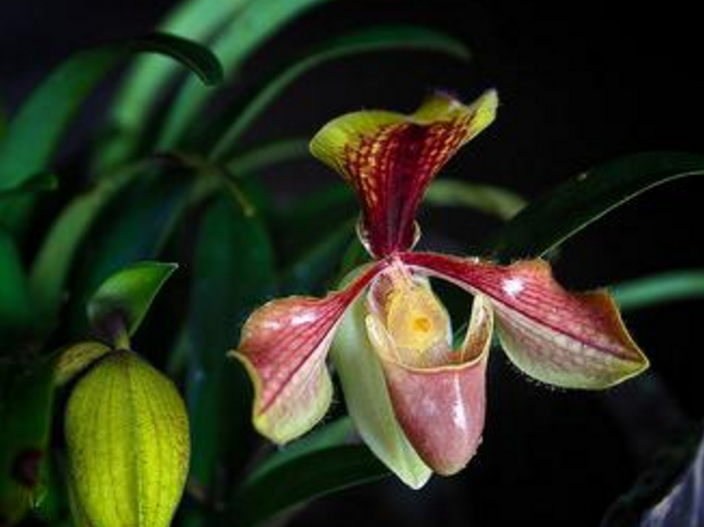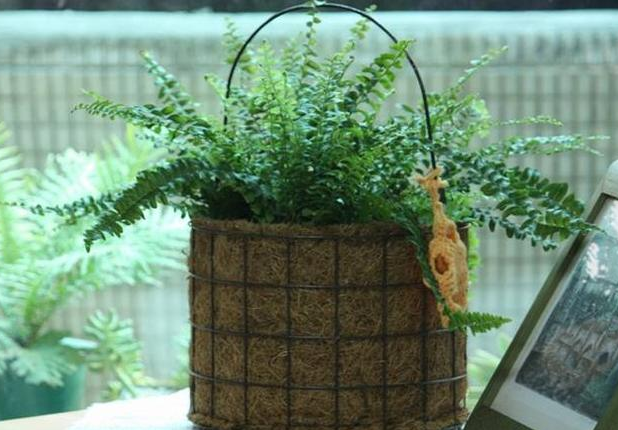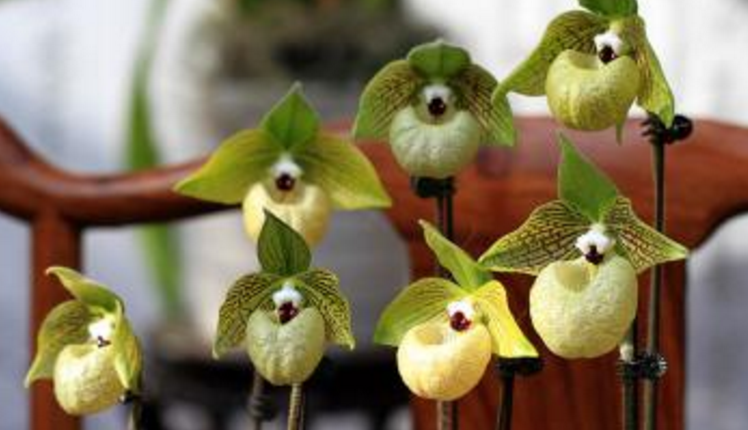What is the price of the culture method of Paphiopedilum
Paphiopedilum is also called slipper orchid. Perennial herbs of Orchidaceae. Most of them are terrestrial species, and there are many hybrid varieties. It is one of the most popular cultivated orchids. Most of the warm variegated varieties of Aristolochia blossom in summer and autumn, so what is the breeding method of Aristolochia? What is the price of Paphiopedilum? Next, let's go and have a look.

1. The culture method of Paphiopedilum.
As the flowering season of Paphiopedilum varies according to different varieties, the management is different from season to season. As the hometown where Paphiopedilum grows is in the humid zone, it likes water all the year round. In spring, when the surface is slightly dry, it should be watered in time to ensure the dampness in the basin, watering should be watered until the water flows out from the bottom of the basin, and spray water on the leaf surface while watering, which can promote the growth of new buds.
In summer, as the summer sunshine is very strong, it is necessary to add a layer of shading net to the plant to prevent sunburn from occurring in the leaves. If the sun is too strong, the growth is slow, the plant is short or sunburn occurs, the leaves wither, and even the whole plant dies. But if the light is too weak, it will reduce or even fail to blossom. Summer is the peak growth period of Paphiopedilum, so it should be fully watered sooner or later, otherwise it will dry up. In addition to fully watering the plants, water should also be watered around and on the ground to keep the air cool. In the peak growing season of Paphiopedilum, fertilizer is indispensable. Liquid fertilizer is applied once a week. In addition to putting fertilizer directly into the basin, it can also be sprayed on the leaves.
Autumn: autumn is equivalent to summer, the light is a little weaker, so remove a layer of the shading net. As Paphiopedilum has entered a growth standstill period in autumn, it does not absorb much water, so when the soil surface is dry, it is usually watered every 3 days, but it should be noted in autumn that the air is relatively dry in autumn. it often occurs when the surface looks dry, but the inner layer is very wet, so watering should not be too much at this time.
Winter: because the flower bud grows gradually at this time, the flower stem also needs to grow, so the water absorption is relatively large, if the water supply is insufficient during this period, it is quite disadvantageous to the growth of the flower stem and stop growing in a short time, so, special attention should be paid not to let it be too dry. Humidity is very important for Paphiopedilum. If the humidity is not enough, it will cause plant weakness. The way to increase humidity is to water the ground to increase humidity, or to spray water on the leaves.
Pest control
Paphiopedilum is easy to suffer from soft rot, especially in summer, so pay special attention to ventilation. In the early stage of soft rot, water-like brown rot appears at the base of the orchid plant. The method of prevention is before entering the Meiyu period, spray irrigation of large unboiled water and agent 800x liquid, or avoid resistant water and agent 1000 times liquid, twice a month.
2. What is the price of Paphiopedilum
The general market price is between dozens of yuan and 200 yuan, and the higher price is determined according to the variety and height of Paphiopedilum.
The above prices are all online reference prices, the actual price please consult the local market.
Cultivation and Culture methods of Paphiopedilum
Cultivation and cultivation methods: Paphiopedilum has no tissue to store nutrients, however, it is still necessary to ensure the dormancy period of cool-loving varieties. In addition, in winter, most of Paphiopedilum have a relatively dry, well-lit growth environment. Lighting: generally speaking, Paphiopedilum needs less light than other orchids. Too strong or too weak light will interfere with plant photosynthesis and damage plant growth. Temperature: in the origin of Paphiopedilum, the seasonal temperature difference does not affect its growth. In spite of this, cool varieties of Aristolochia (such as P.insigne) should be kept outdoors in summer, and artificial cooling can be considered at night. Most of them can be cultivated at room temperature. However, when the temperature (in greenhouse and greenhouse) exceeds 30 ℃, put Paphiopedilum in the shade. The parents of the hybrid "Snow Queen" of Paphiopedilum are Paphiopedilum and Paphiopedilum, which, like almost all white flower varieties, show the characteristics of their parents. Although the parents are not easy to cultivate, the cultivation of hybrid seed generation is not difficult. Culture soil: Paphiopedilum has higher requirements for culture soil. Most places of origin of Paphiopedilum have more precipitation and the air is relatively dry for only a few months of the year. Therefore, Paphiopedilum requires moist culture soil throughout the year. In addition, in order to prevent root hypoxia, the cultured soil should be well drained. Watering: use soft water (preferably Rain Water) to water the flowers, but do not accumulate water in the pot. otherwise, a large number of bacteria are cultured, which is easy to cause plant decay and death. The water for watering the flowers in winter should not be too cold. The leaves should not accumulate water for a long time. Otherwise, the leaves are perishable. The higher air humidity needed for the growth of Paphiopedilum can be achieved by spraying water or spray in summer. Fertilization: fertilization should be less and diligent. If organic fertilizer is used, some varieties of Paphiopedilum will be more luxuriant (such as P.lowii). In addition, varieties with larger plants need more fertilizer than varieties with fewer leaves. The plant will not blossom until there is enough fertilizer and the new bud is fully developed, otherwise it will not blossom until the next year. In general, all varieties of Paphiopedilum should be applied lime fertilizer every six months, with a dose of one teaspoon of carbonate lime per 10 cm pot diameter, or lime can be added to the watering flowers, so that the fertilizer can be absorbed by the plant for a long time. Change the basin and transplant: change the basin every two years, if you can change the basin once a year, it will be better. Large plants blossom more often, so don't break or tear the roots unless necessary. Do not destroy the plant tissue when changing the basin, otherwise the rot mold will take advantage of the deficiency. Charcoal powder can be used to prevent Pythium. Pest control: all varieties of Paphiopedilum are vulnerable to red plants, especially those with smooth leaves. Therefore, the leaves should be checked frequently. Other pests rarely harm Paphiopedilum. Common diseases of Paphiopedilum also include bacterial and fungal infections. Fresh, ventilated air can play a preventive role. Some varieties can use lime to kill bacteria, the specific method can consult professionals. When cultivating Paphiopedilum, the plants with large flowers and many flowers prefer temperature, so they are more suitable for indoor cultivation. The shape of the orchid used for flower arrangement should be large and round, so we should not blindly pursue the number of flowers while neglecting its quality. The same color orchid is native to limestone and grows in a wide range of areas, from Thailand to China. Today, many orchids with round and plump flowers can be bought in florists. The price is not higher than that of small flower-shaped plants. according to personal preference, you can choose varieties with small flowers but more flowers or large flowers but less flowers. In some varieties, one flower blossoms immediately after the other has withered. So the florescence lasts for half a year. For example, Paphiopedilum'Pinocchio' of Paphiopedilum.
Cultivation methods of Aristolochia: there is no tissue for storing nutrients, but it is still necessary to ensure the dormancy period of cool varieties. In addition, in winter, most of Paphiopedilum have a relatively dry, well-lit growth environment. Lighting: generally speaking, Paphiopedilum needs less light than other orchids. Too strong or too weak light will interfere with plant photosynthesis and damage plant growth. Temperature: in the origin of Paphiopedilum, the seasonal temperature difference does not affect its growth. In spite of this, cool varieties of Aristolochia (such as P.insigne) should be kept outdoors in summer, and artificial cooling can be considered at night. Most of them can be cultivated at room temperature. However, when the temperature (in greenhouse and greenhouse) exceeds 30 ℃, put Paphiopedilum in the shade.
The parents of the hybrid species "White Queen" are Paphiopedilum maculatum and Aristolochia homocolor. Like almost all white flower varieties, they show the characteristics of their parents. Although it is not easy for parents to cultivate miscellaneous varieties, it is not difficult to cultivate hybrid seed generations. Cultivation soil: Paphiopedilum has higher requirements for culture soil. Most places of origin of Paphiopedilum have more precipitation and the air is relatively dry for only a few months of the year. Therefore, Paphiopedilum requires moist culture soil throughout the year. In addition, in order to prevent root hypoxia, the cultured soil should be well drained. Watering: use soft water (preferably Rain Water) to water the flowers, but do not accumulate water in the pot. otherwise, a large number of bacteria are cultured, which is easy to cause plant decay and death. The water for watering the flowers in winter should not be too cold. The leaves should not accumulate water for a long time. Otherwise, the leaves are perishable. The higher air humidity needed for the growth of Paphiopedilum can be achieved by spraying water or spray in summer. Fertilization: fertilization should be less and diligent. If organic fertilizer is used, some varieties of Paphiopedilum will be more luxuriant (such as P.lowii). In addition, varieties with larger plants need more fertilizer than varieties with fewer leaves. The plant will not blossom until there is enough fertilizer and the new bud is fully developed, otherwise it will not blossom until the next year. In general, all varieties of Paphiopedilum should be applied lime fertilizer every six months, with a dose of one teaspoon of carbonate lime per 10 cm pot diameter, or lime can be added to the watering flowers, so that the fertilizer can be absorbed by the plant for a long time. Change the basin and transplant: change the basin every two years, if you can change the basin once a year, it will be better. Large plants blossom more often, so don't break or tear the roots unless necessary. Do not destroy the plant tissue when changing the basin, otherwise the rot mold will take advantage of the deficiency. Charcoal powder can be used to prevent Pythium. Pest control: all varieties of Paphiopedilum are vulnerable to red plants, especially those with smooth leaves. Therefore, the leaves should be checked frequently. Other pests rarely harm Paphiopedilum. Common diseases of Paphiopedilum also include bacterial and fungal infections. Fresh, ventilated air can play a preventive role. Some varieties can use lime to kill bacteria, the specific method can consult professionals. When cultivating Paphiopedilum, the plants with large flowers and many flowers prefer temperature, so they are more suitable for indoor cultivation. The shape of the orchid used for flower arrangement should be large and round, so we should not blindly pursue the number of flowers while neglecting its quality. Paphiopedilum is native to limestone and grows in a wide range of areas, ranging from Thailand to China.
Nowadays, many orchids with round and plump flowers can be bought in the florist. The price is not higher than that of small flower-shaped plants. according to personal preference, you can choose varieties with small flowers but more flowers or large flowers but less flowers. In some varieties, one flower blossoms immediately after the other has withered. So the florescence lasts for half a year. For example, Paphiopedilum'Pinocchio' of Paphiopedilum. .
- Prev

How do ferns reproduce yellow leaves?
Pteridophytes, this is a lot of people like breeding, this pteridophyte is so good-looking, how do ferns reproduce? What about the yellow leaves of pteridophytes: how to reproduce ferns: introduction to split-plant reproduction, method 1: directly take the new root balls growing in the periphery of the roots to reproduce
- Next

What are the effects and functions of the maintenance method of the turnip orchid
Paphiopedilum unique shape, rich flower color, flowering life is longer, potted as for home viewing leaves flowers, edify sentiment! The maintenance method of turnip orchid can not be as simple as you think, Xiaobian today will take you to understand the maintenance method of turnip orchid and the efficacy and function of turnip orchid. The maintenance method of Paphiopedilum
Related
- Fuxing push coffee new agricultural production and marketing class: lack of small-scale processing plants
- Jujube rice field leisure farm deep ploughing Yilan for five years to create a space for organic food and play
- Nongyu Farm-A trial of organic papaya for brave women with advanced technology
- Four points for attention in the prevention and control of diseases and insect pests of edible fungi
- How to add nutrient solution to Edible Fungi
- Is there any good way to control edible fungus mites?
- Open Inoculation Technology of Edible Fungi
- Is there any clever way to use fertilizer for edible fungus in winter?
- What agents are used to kill the pathogens of edible fungi in the mushroom shed?
- Rapid drying of Edible Fungi

